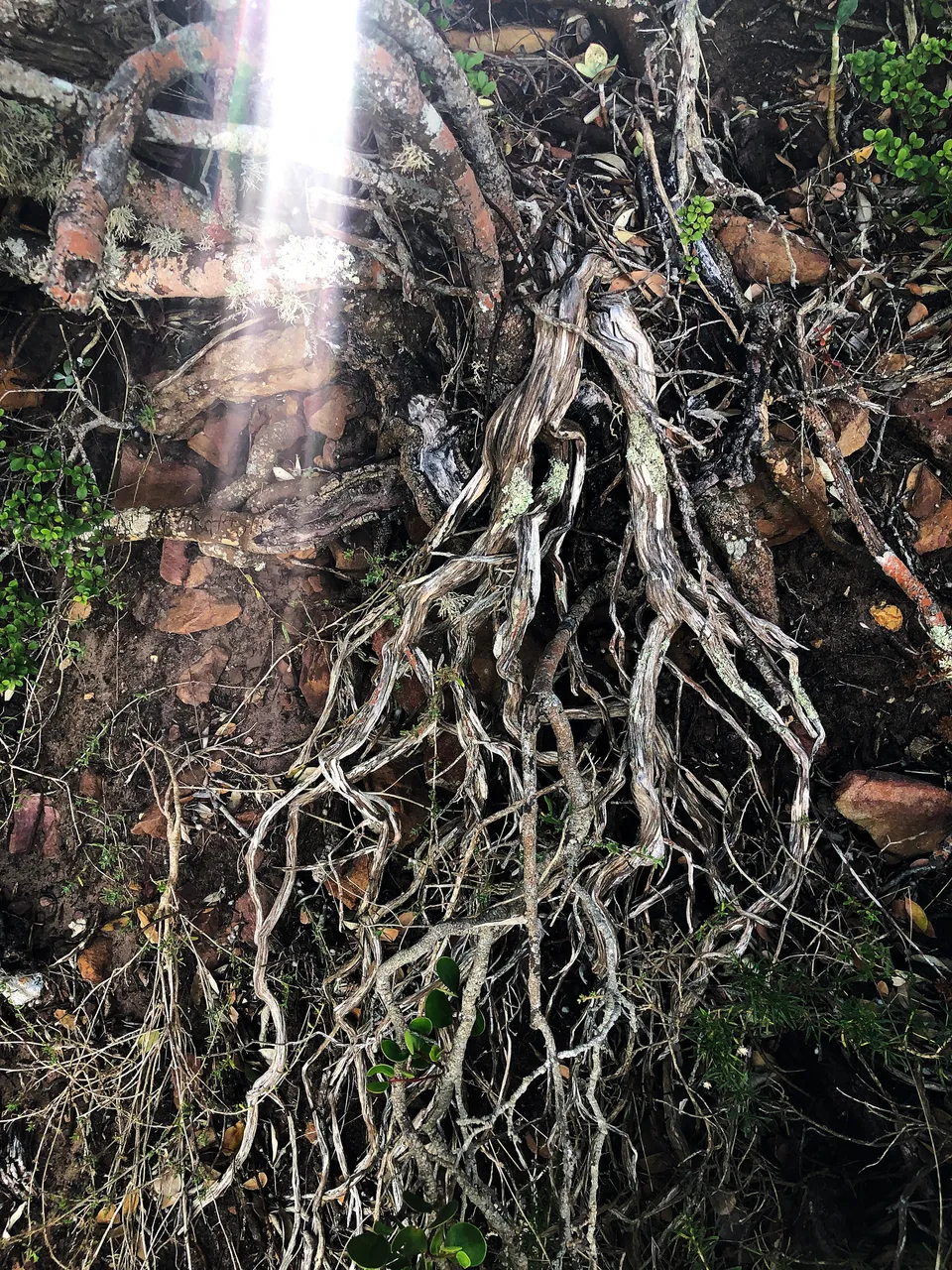I have an odd fascination with dead timber. More specifically, in the coastal region where I live, we have lots of fynbos (fine bush) shrubs that die off, and the weathered wood always pulls me closer. I love to bend down and take interesting photographs from different angles and play with different colors. In this post, I continue with this series which I call "Movement". This is the fifth installment. I will also, as usual, write some philosophical musings on the subject.
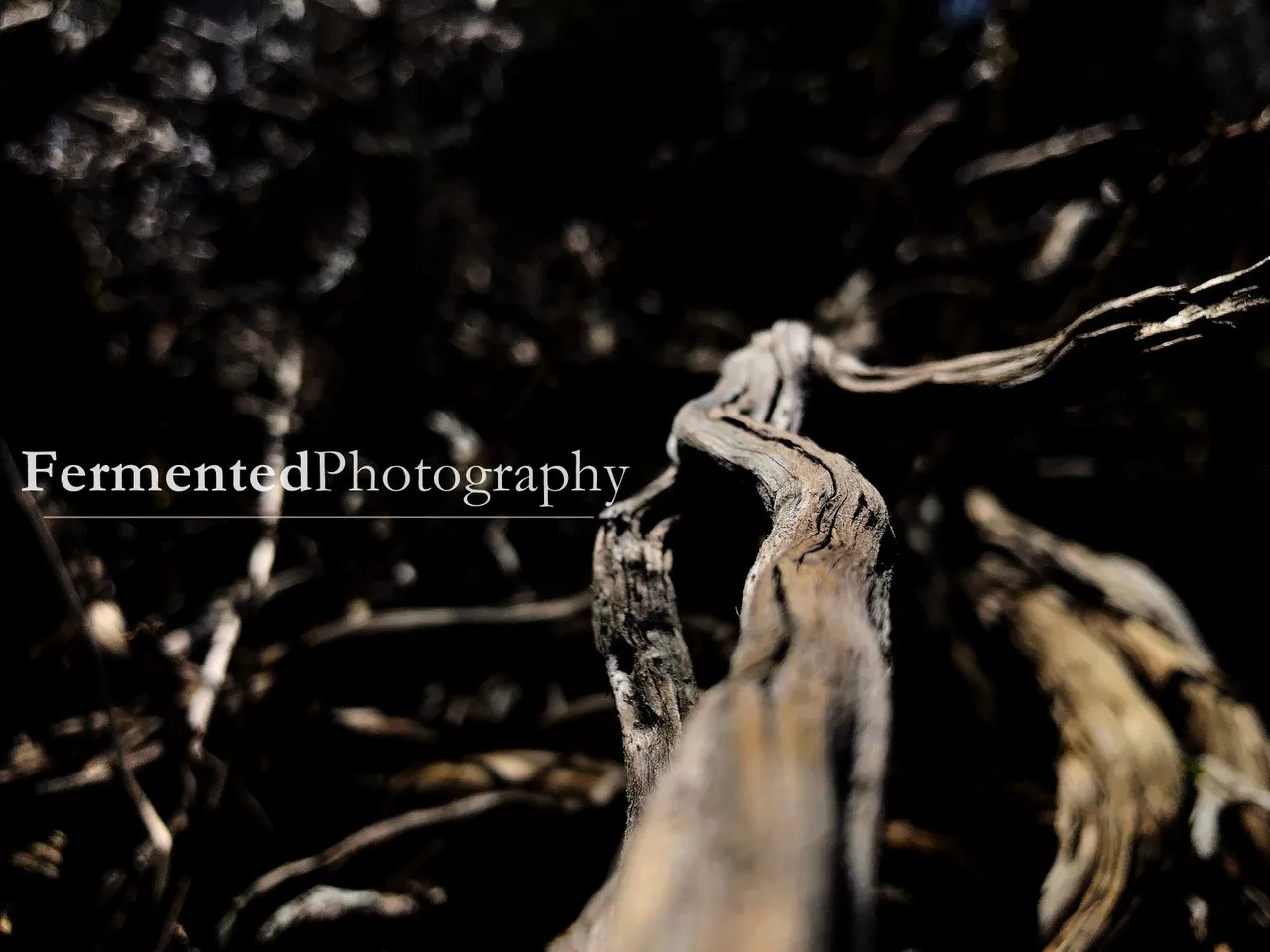
Notes on the Movement Series and Links to the Other Posts
"Movement" is a series in which I usually take photographs of dead trees or shrubs with my Nikkor 50mm f/1.8 ai lens. I usually play around with the point of focus and the lighting. This week, I did not have my camera with me, but the iPhone I had in my pocket at the time of my hike sufficed. I got some really good shots that fell into the series really nicely. I usually link movement to two aspects of the deadwood: (i) the movement from life to death and (ii) the quasi-movement of the wood in the photograph. It feels almost like your eyes are swimming alongside the path the wood draws in the photograph. I also usually write an accompanying philosophical essay about movement.
Movement V
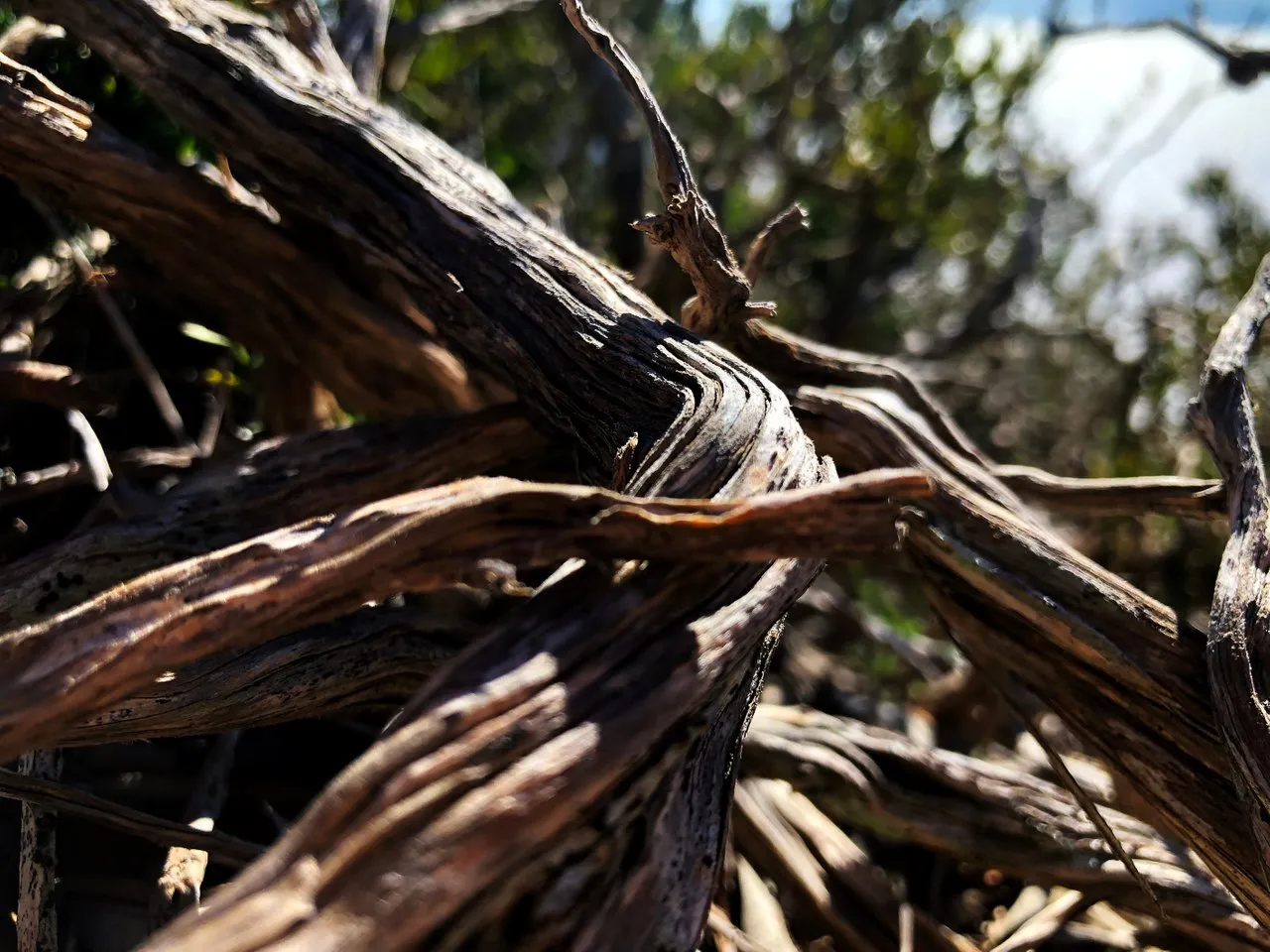
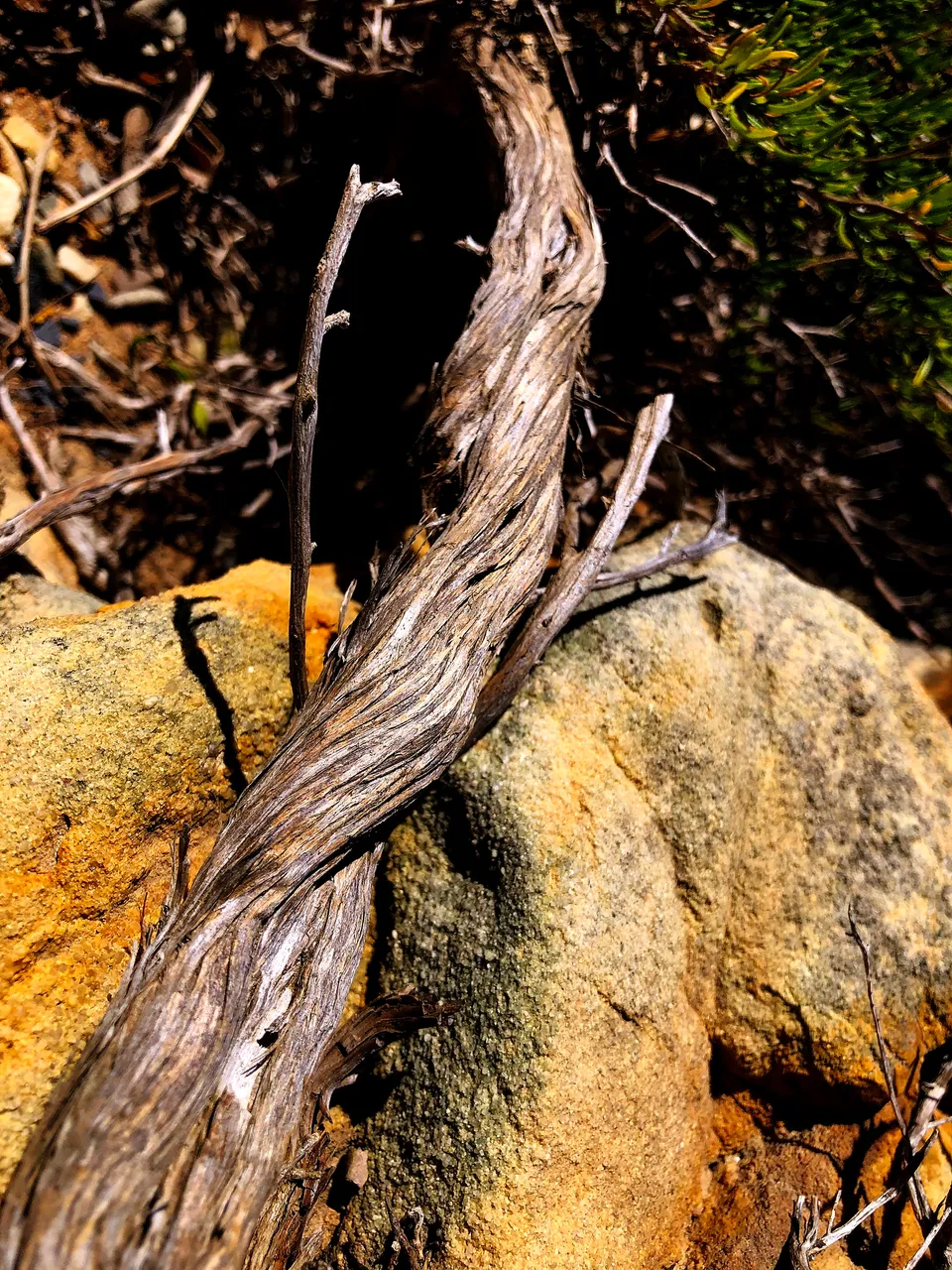
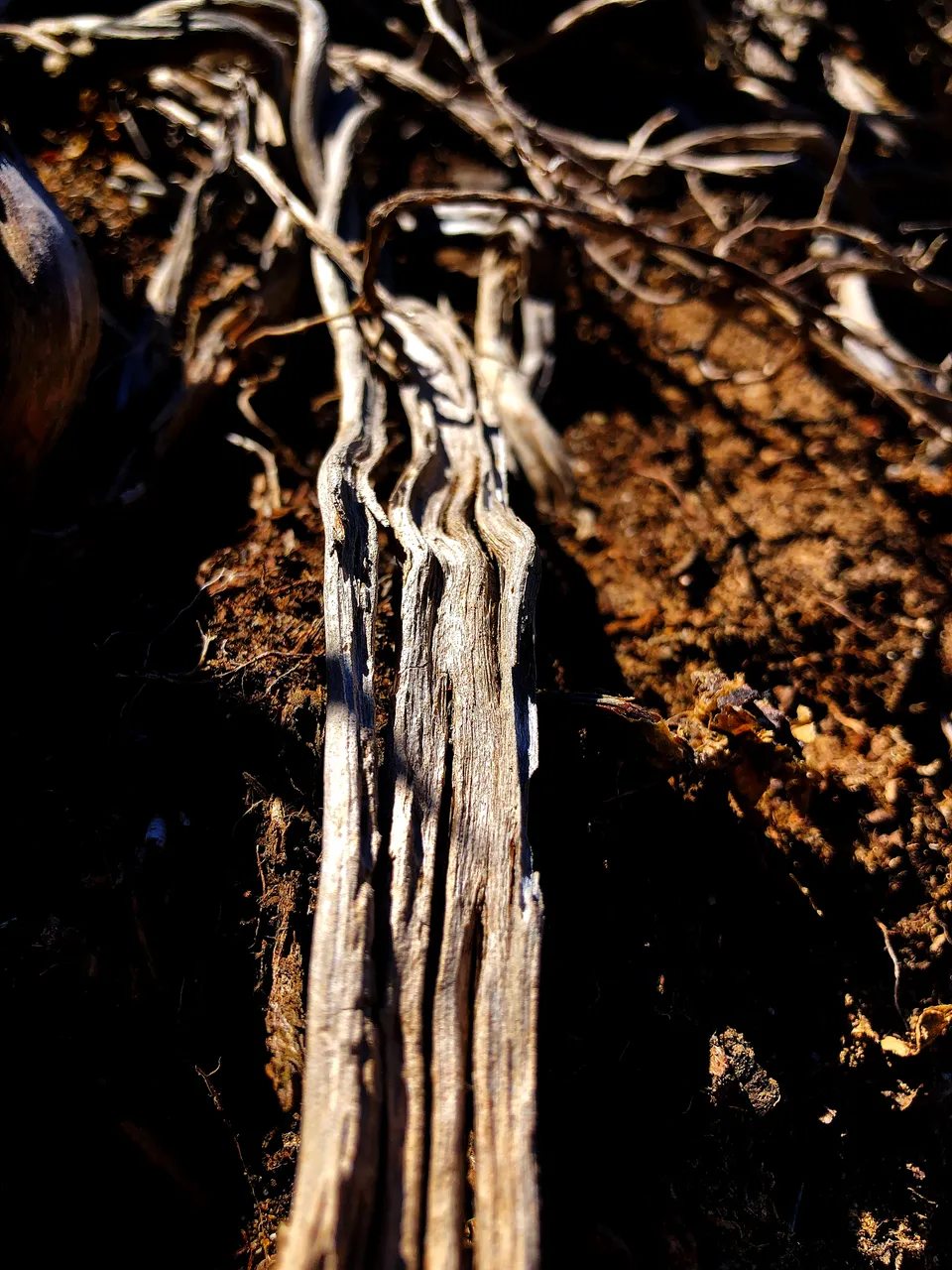
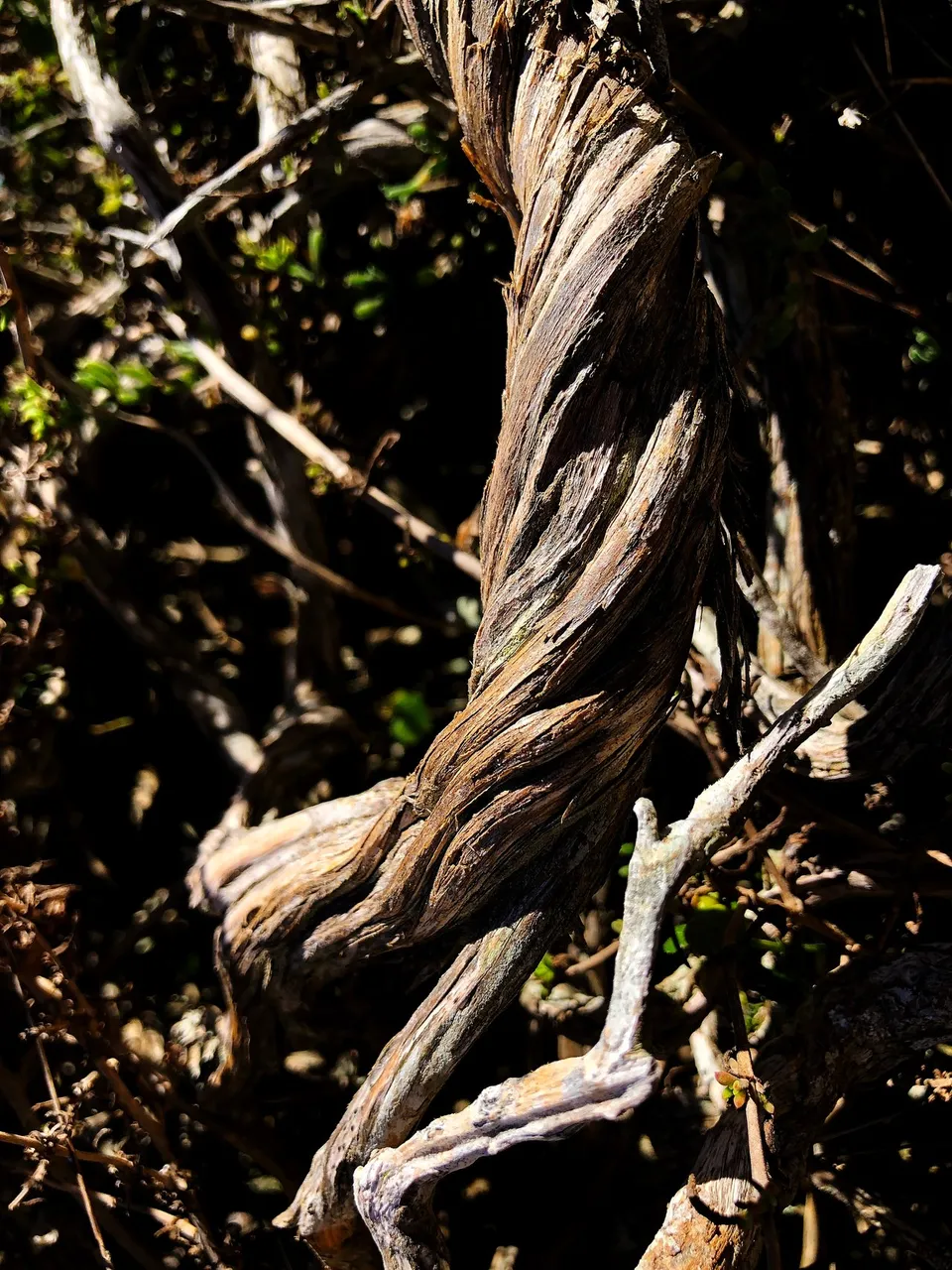
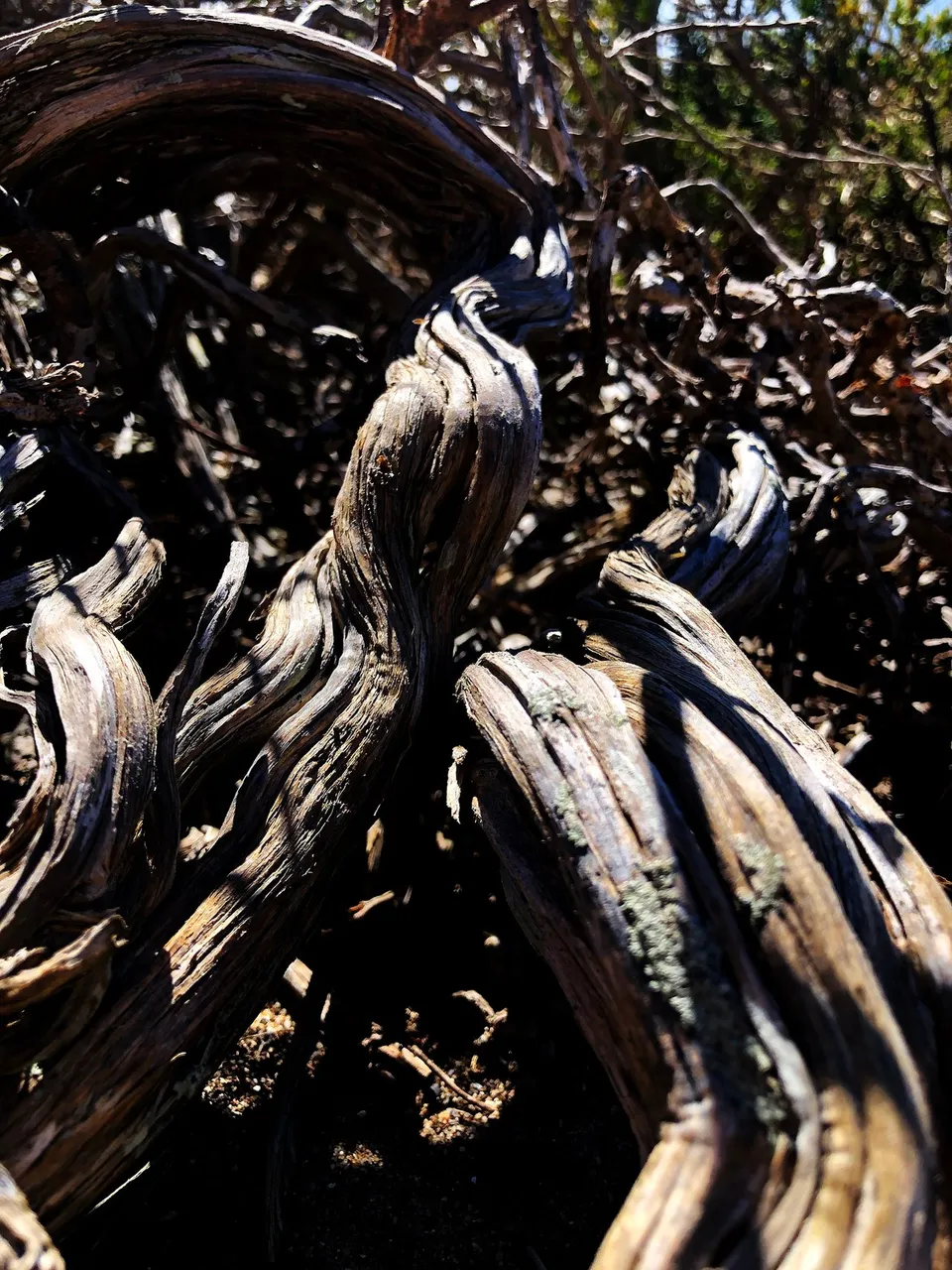

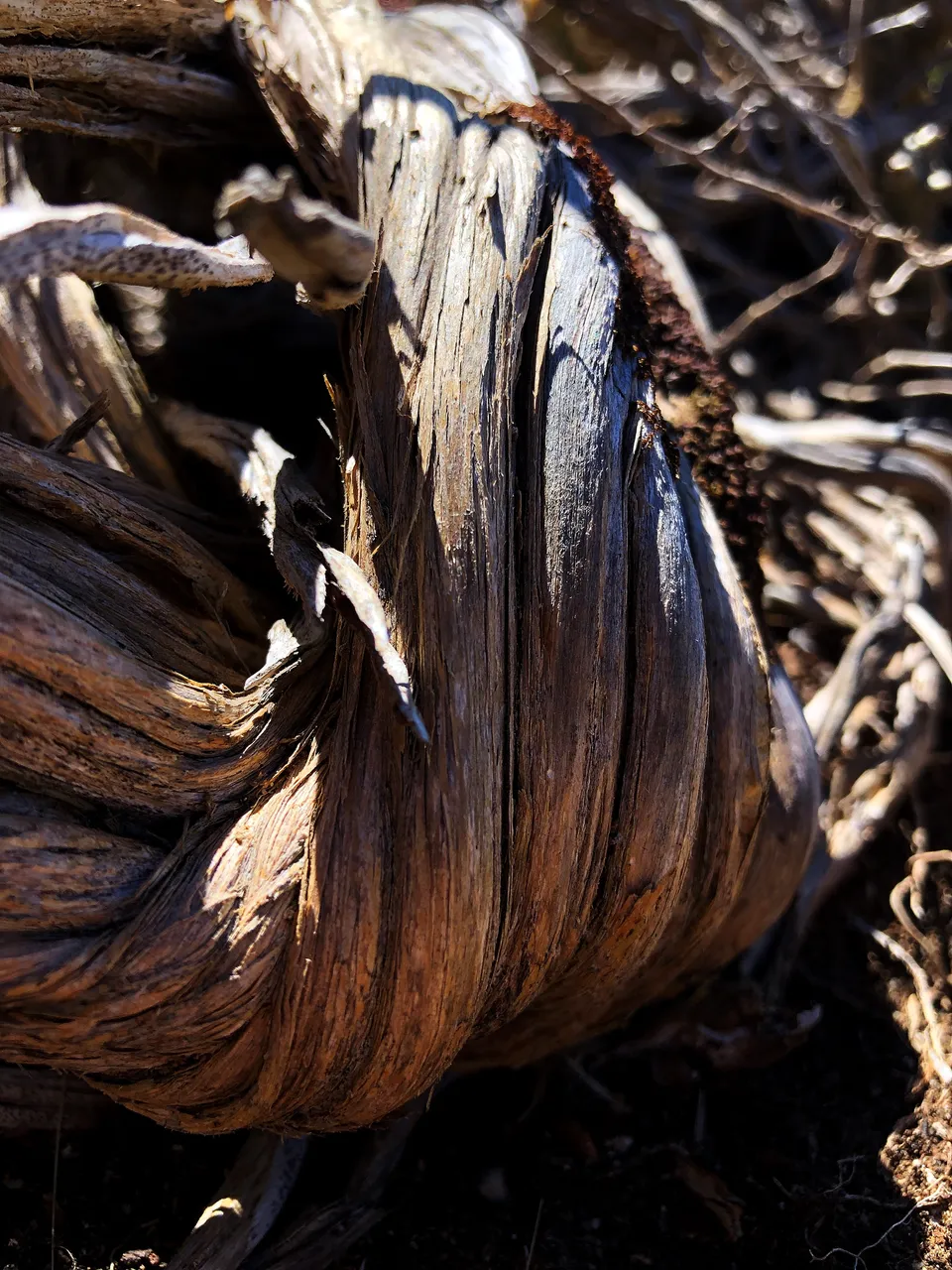

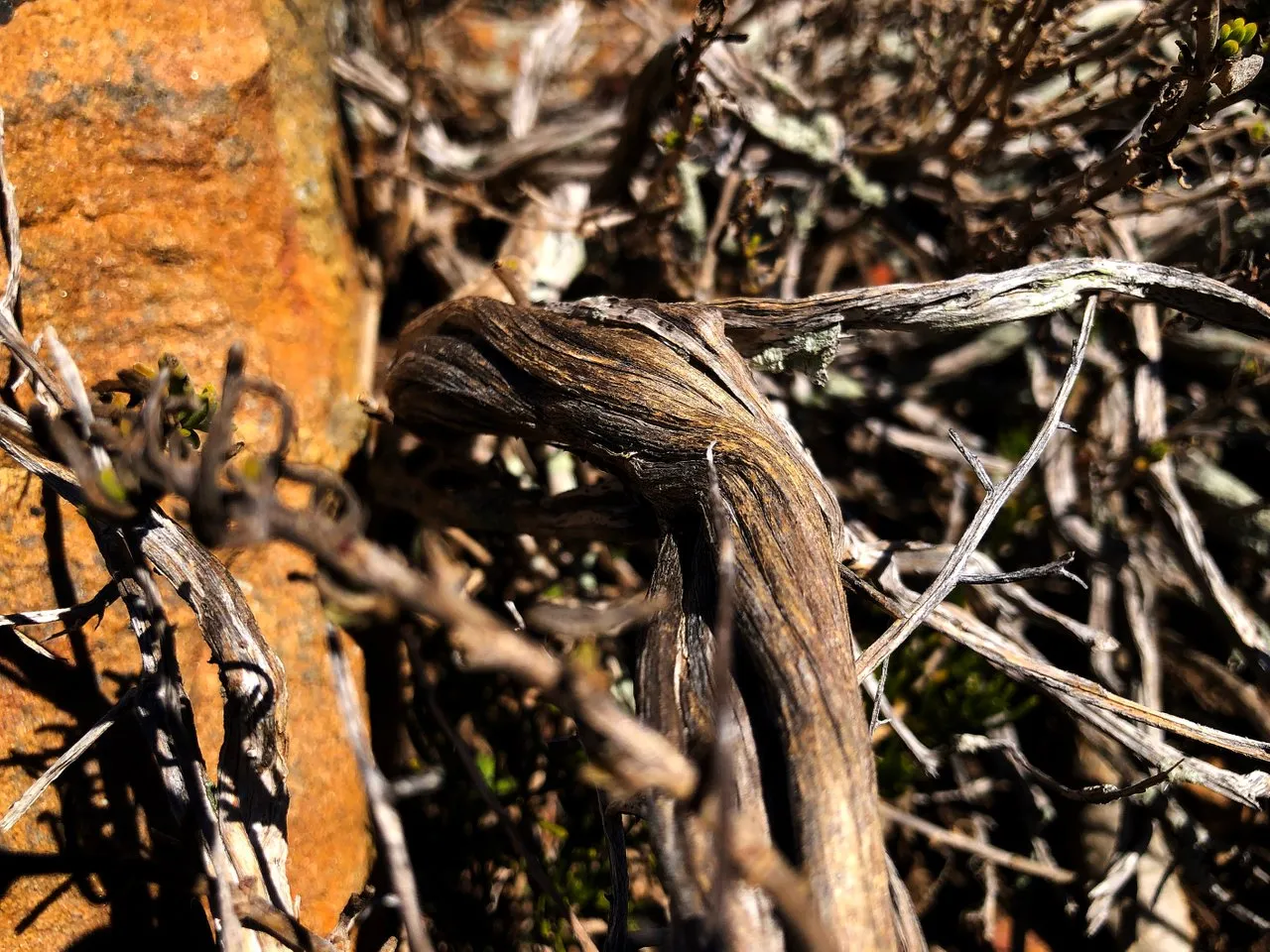

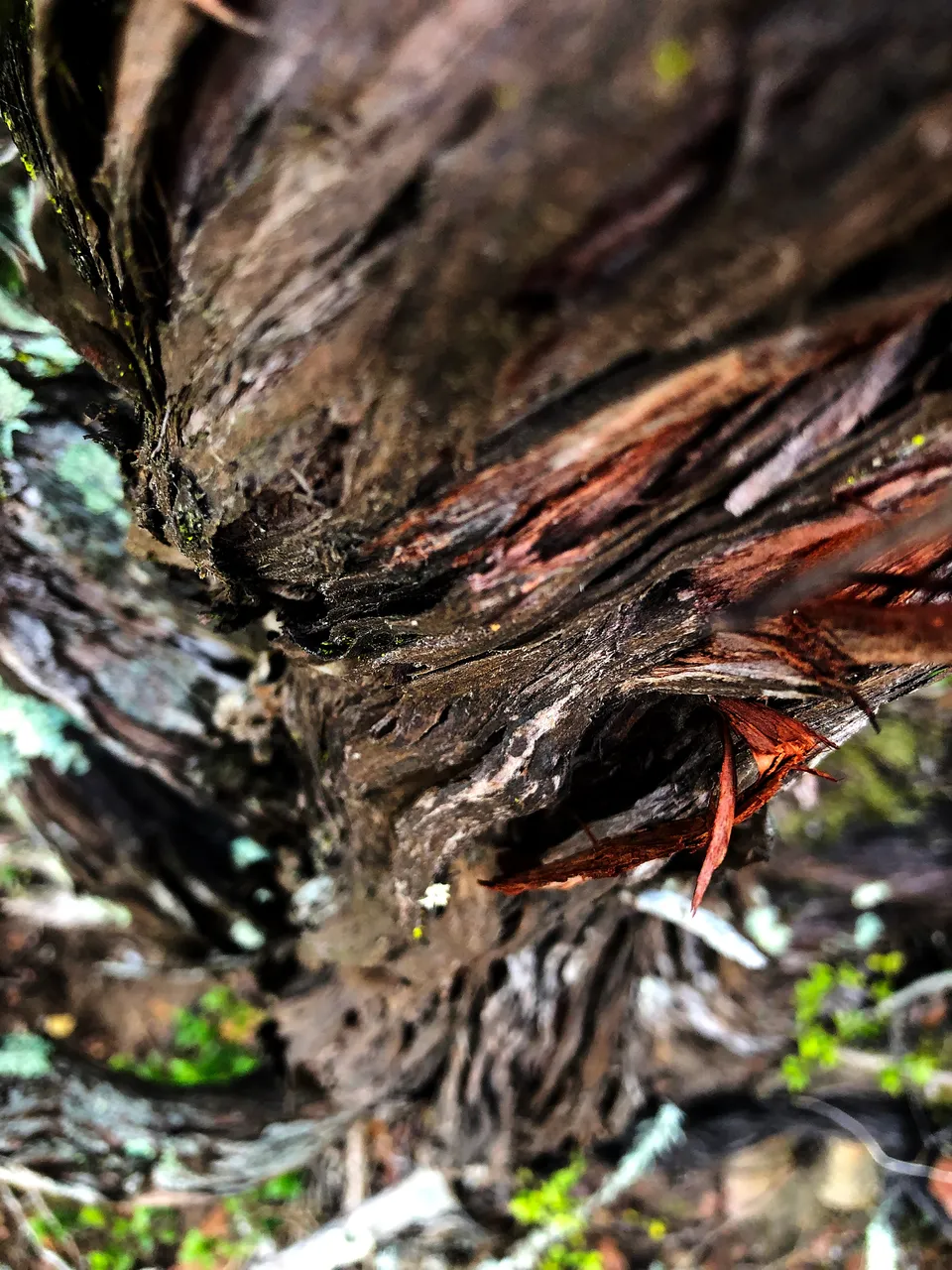
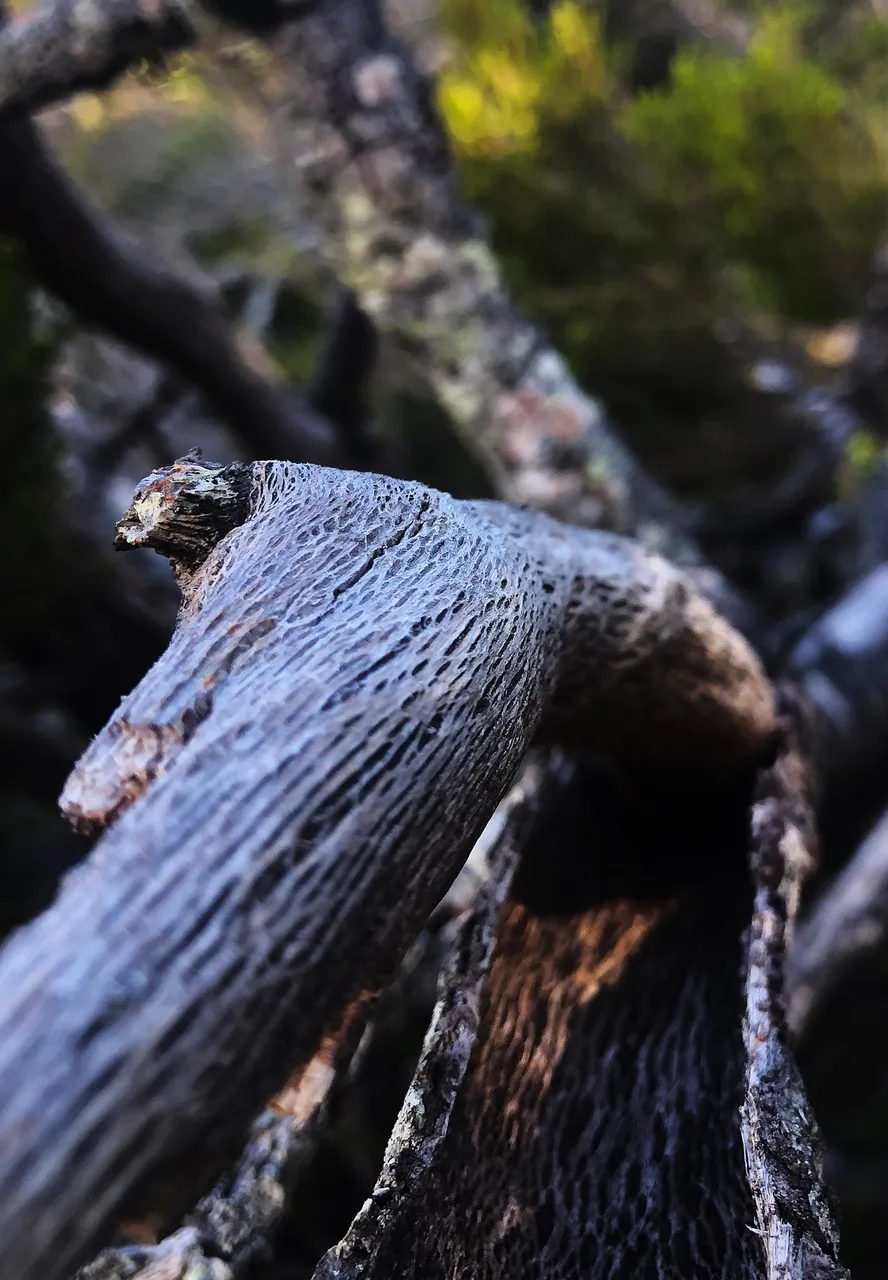
Intermezzo
An intermezzo is a short pause in between two acts or movements in a play. An intermezzo is also sometimes used in academic works by the author to add something into the writing as a brief pause but which is more important than an addendum. Here I place my philosophical essay in between the photographs, like an intermezzo.
Movement is usually a continual flow of energy or water or a body through air. When it stops or comes to a halt, even if only for a couple of seconds or a brief moment, we become hiper aware of the movement-lessness of the object. We become hiper aware of this state because we want the object of desire to move, as a river that suddenly stops its movement, we are not used to things coming to a halt.
Movement then is inherently a continual deferral of the intermezzo. Nothing can really come to a permanent halt, this will go against everything we know and trust. The intermezzo is thus more accurate: there is only a momentary pause/halt between what has happened and what still will happen.
But this leads to an interesting idea: the intermezzo is the present moment.
The present is never. We can never hold it, it always moves. We can never capture it because if we do it becomes the past instantaneously. The present is a micro-thin sliver between the past and the future. An intermezzo between past and future. A momentary halt.
The present becomes a momentary halt.
This momentary halt hyper emphasizes movement. This is because in the present moment we are as if it were hyper-aware of the fact that everything is kind of standing still, halted, paused. But this pause is always deferred. It is never, yet it is always. We are stuck in a weird loop of never stopping. The present is always "intermezzo-ed" between the past and the future. It is only in the absence of this intermezzo that we actually grasp the movement of time. In other words, only when we reflect on the past do we become aware that time has moved.

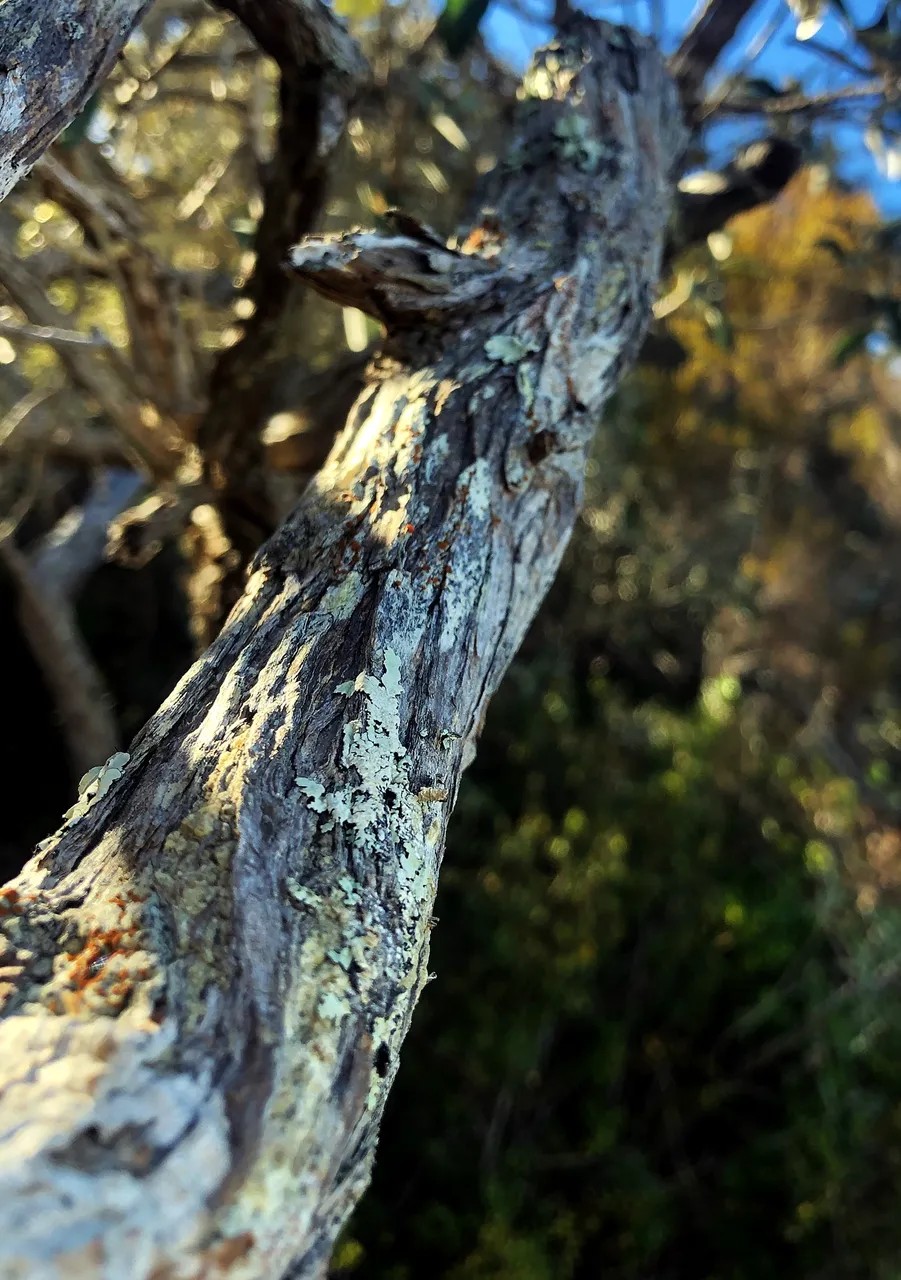
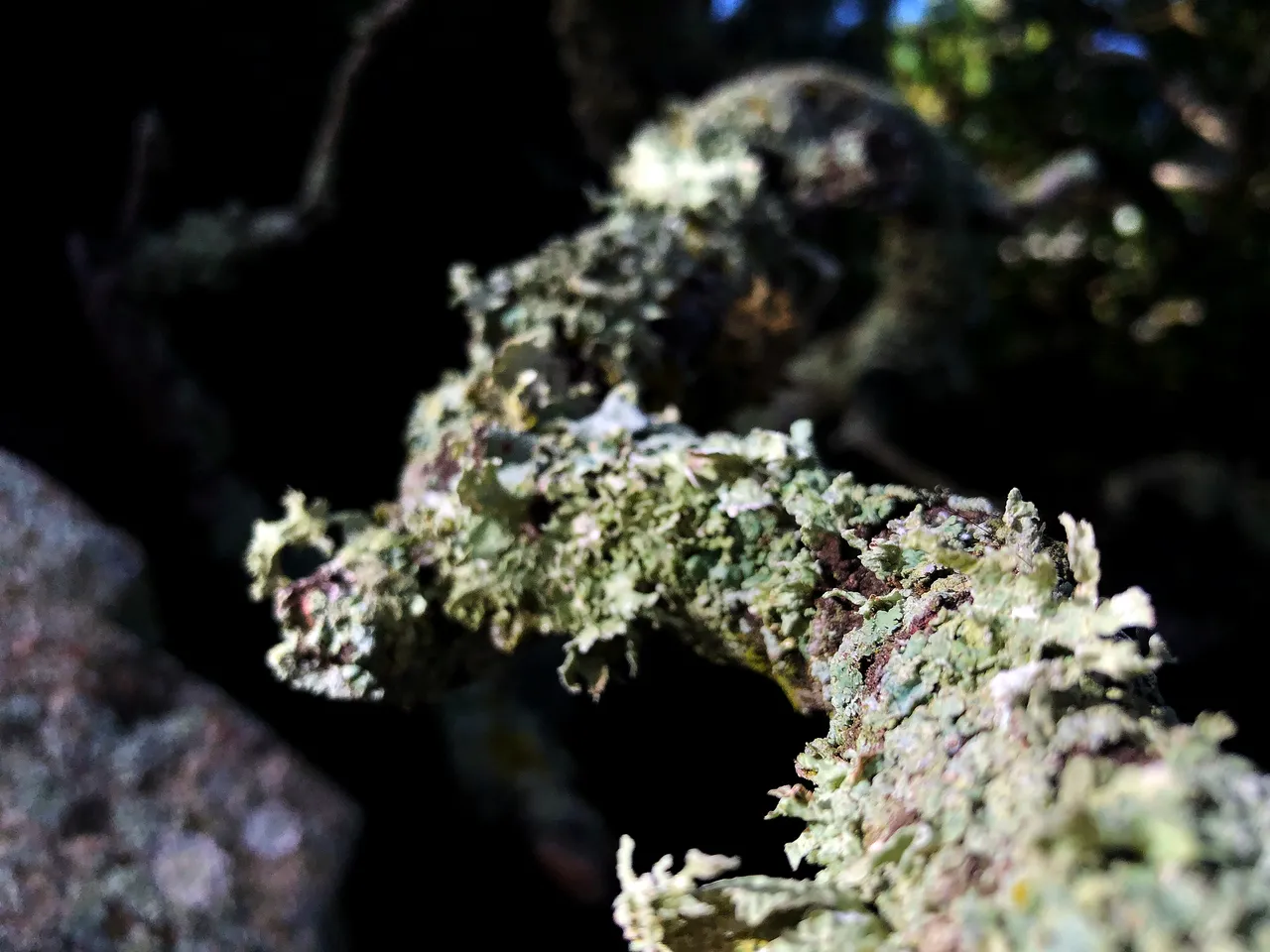
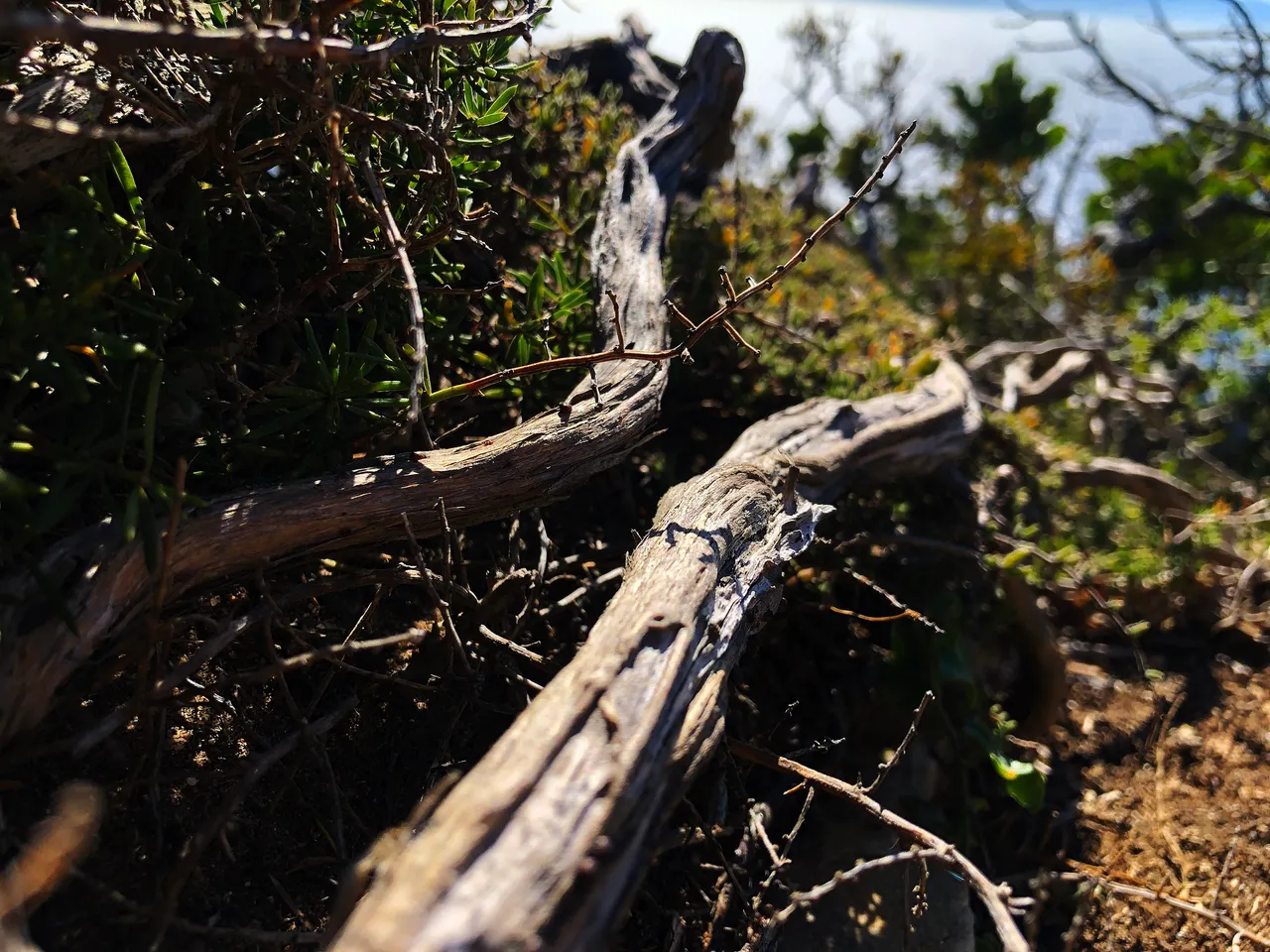

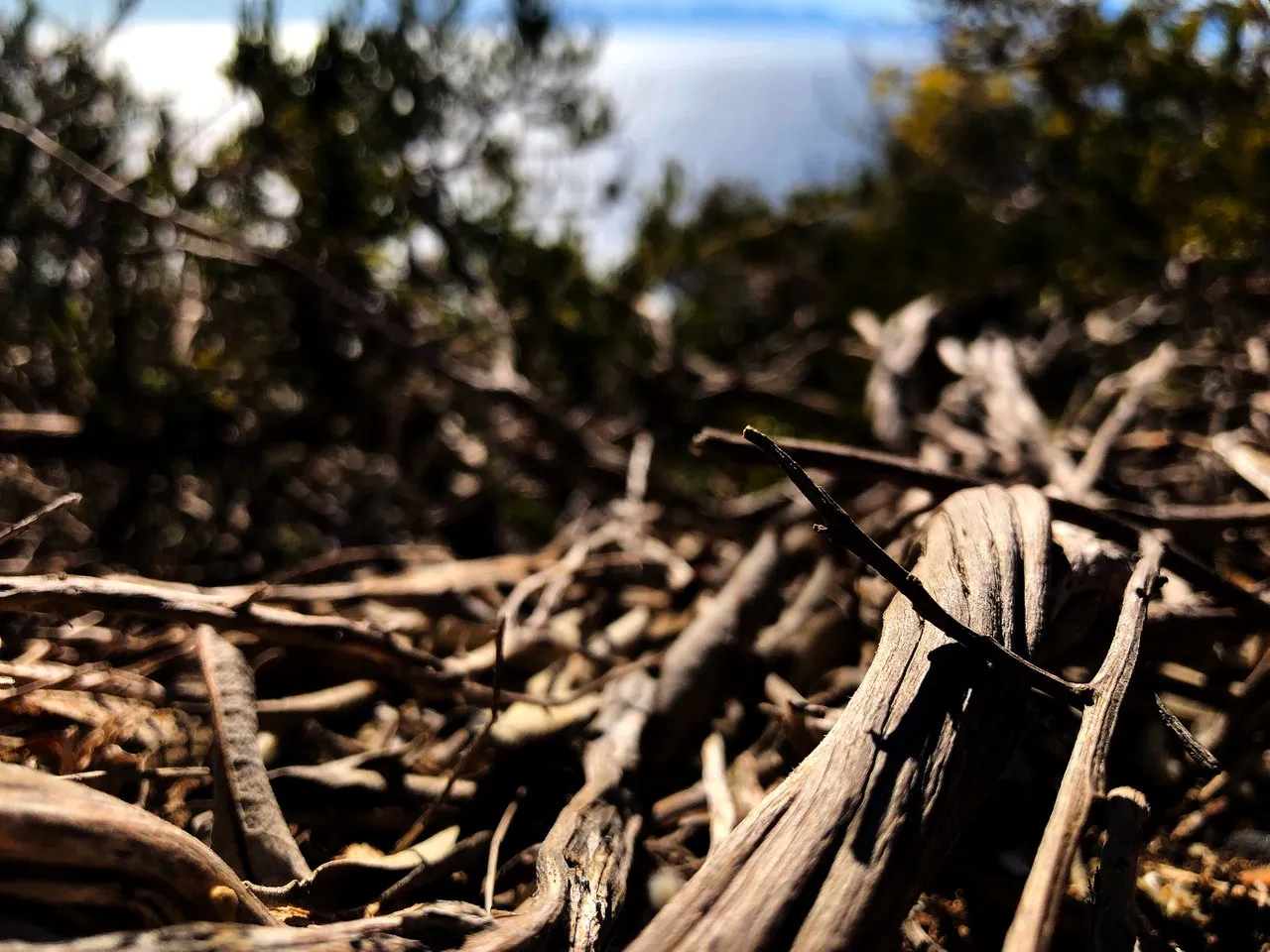

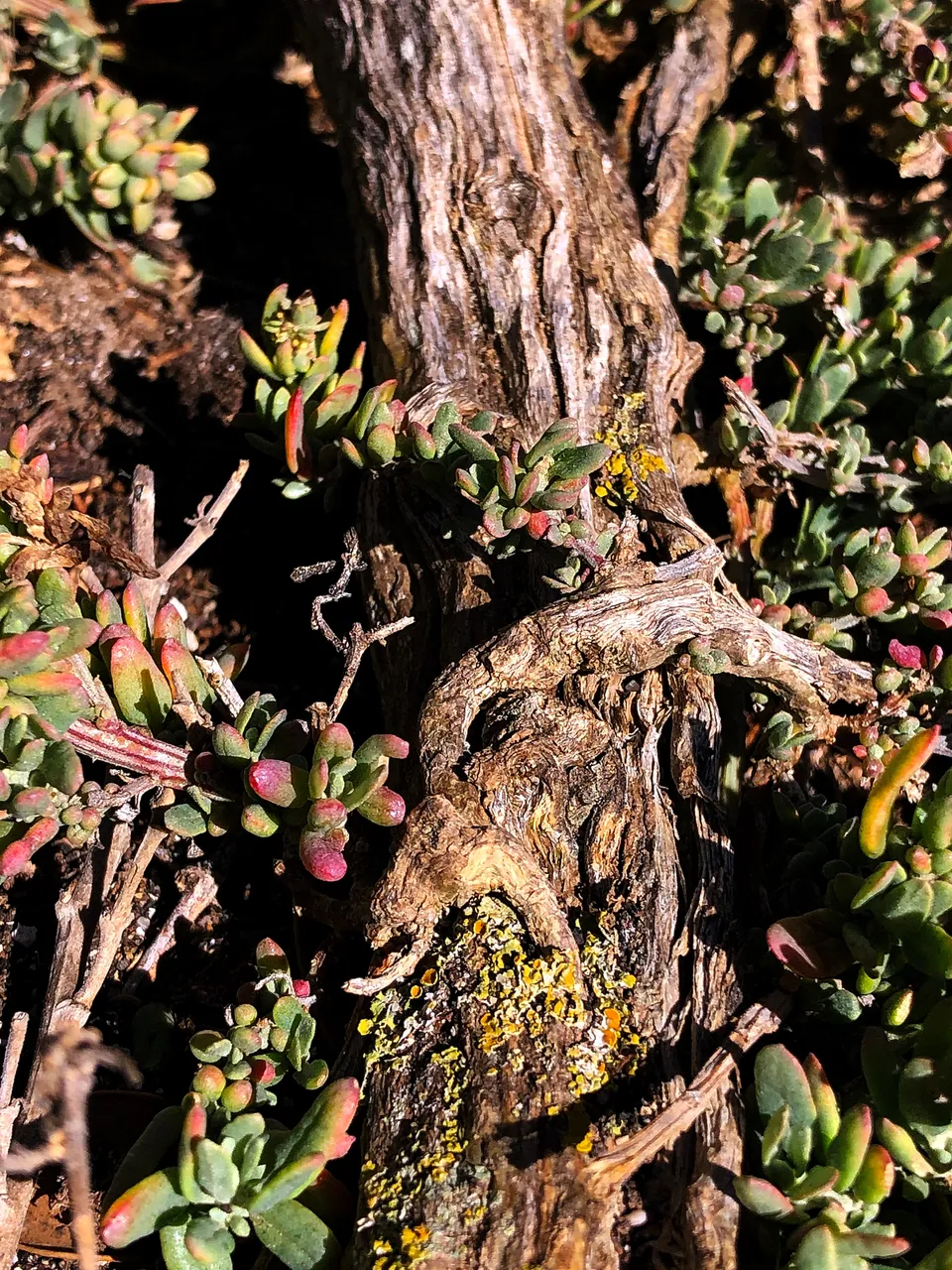
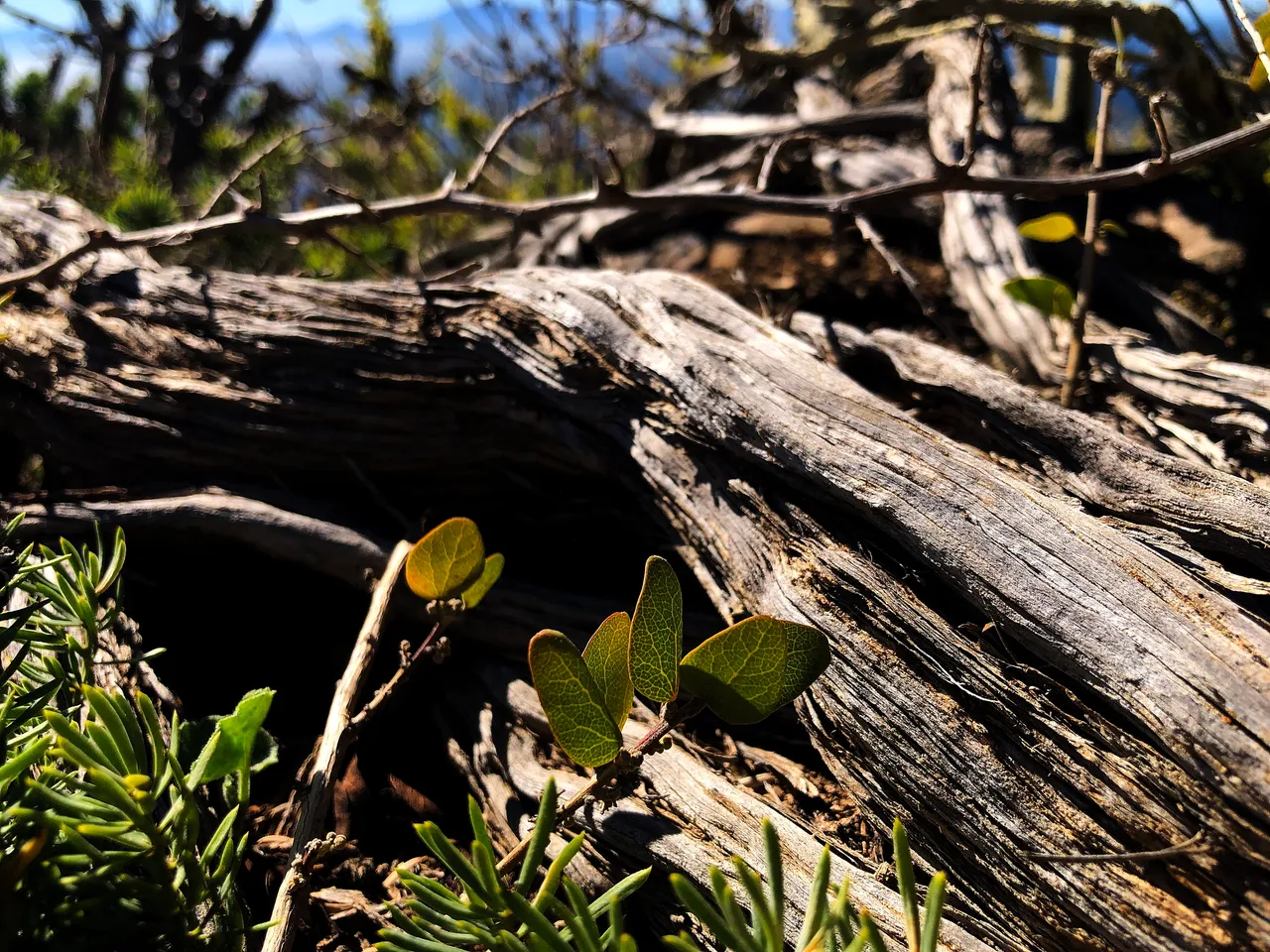
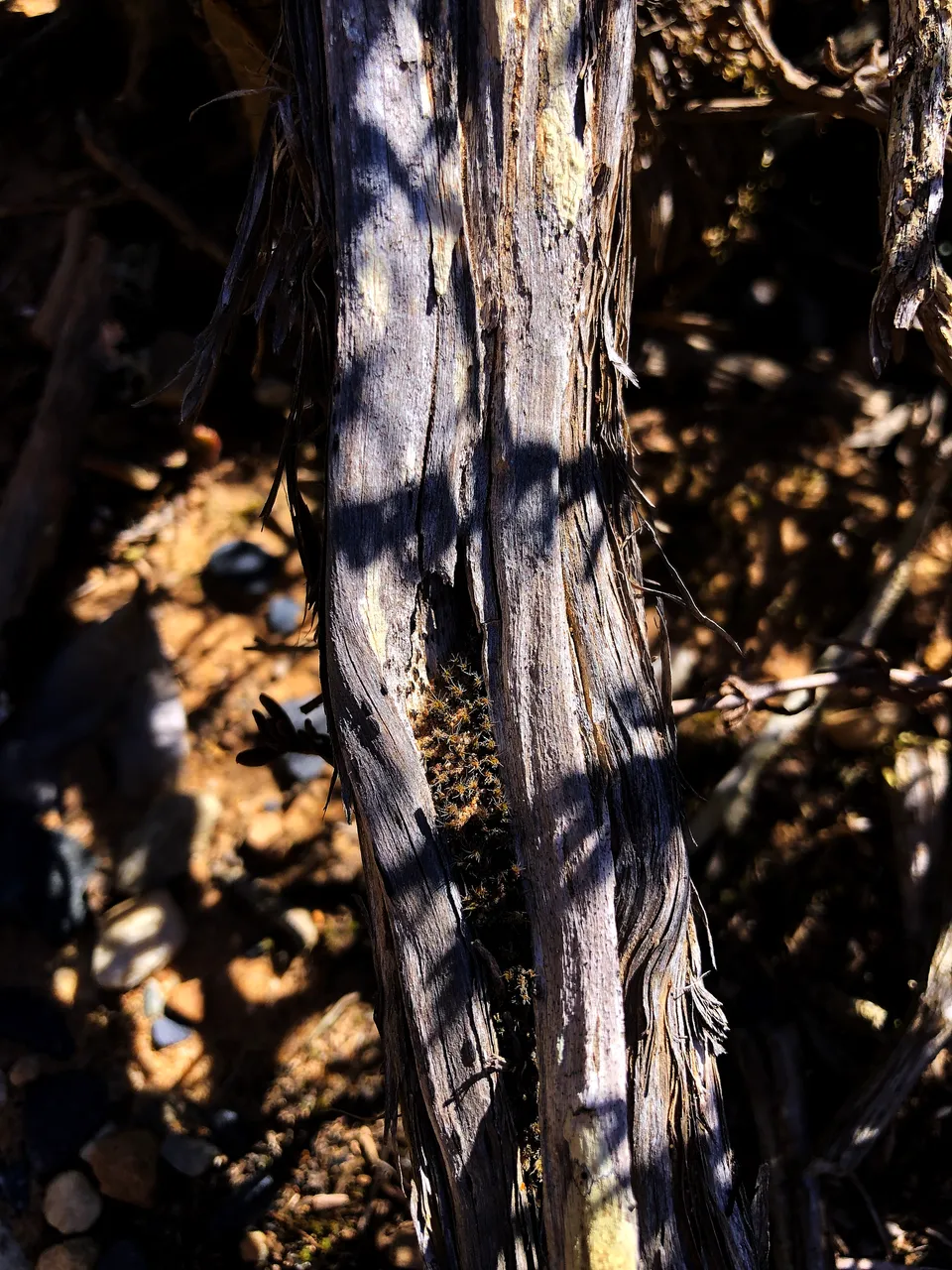
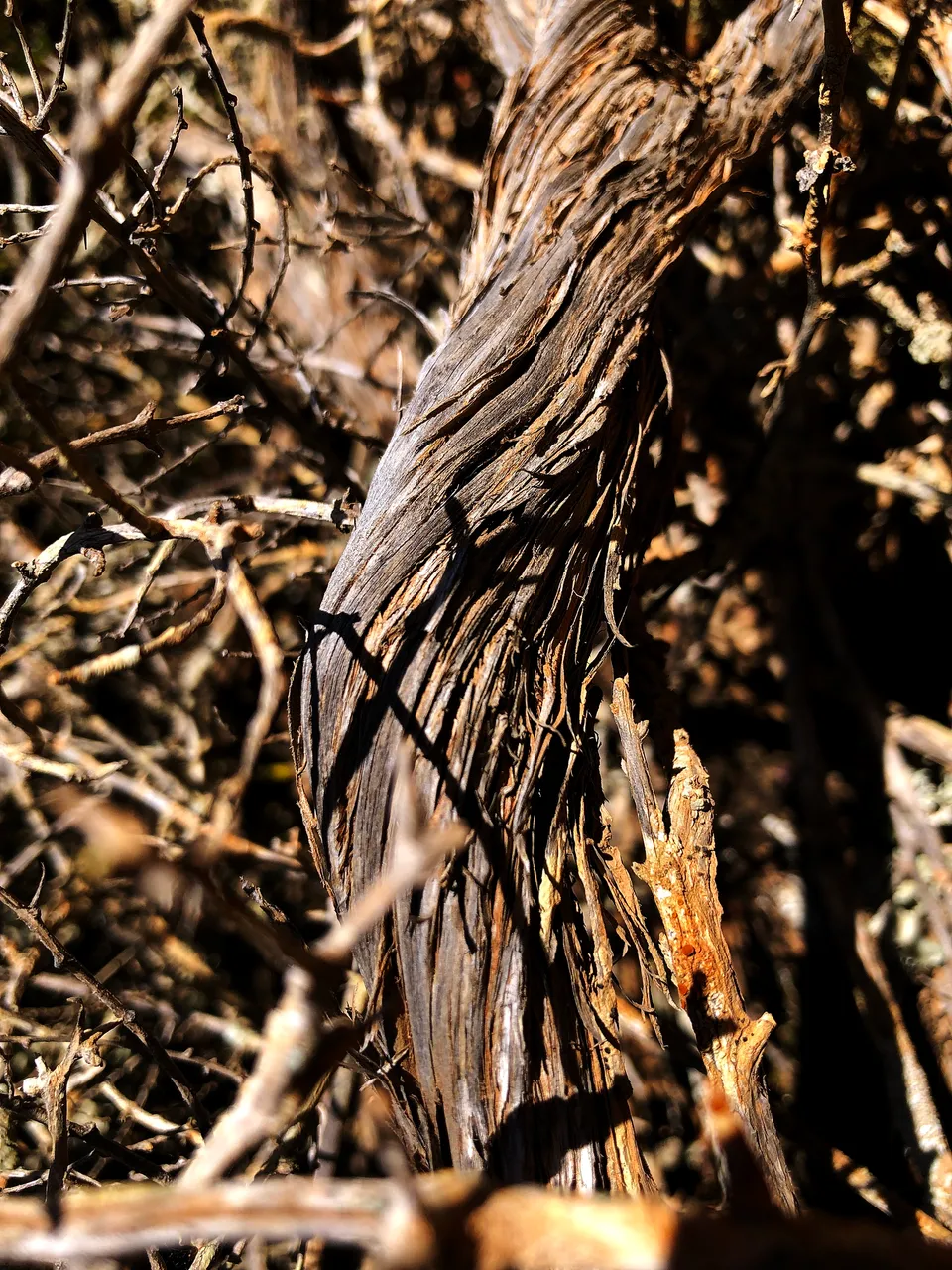
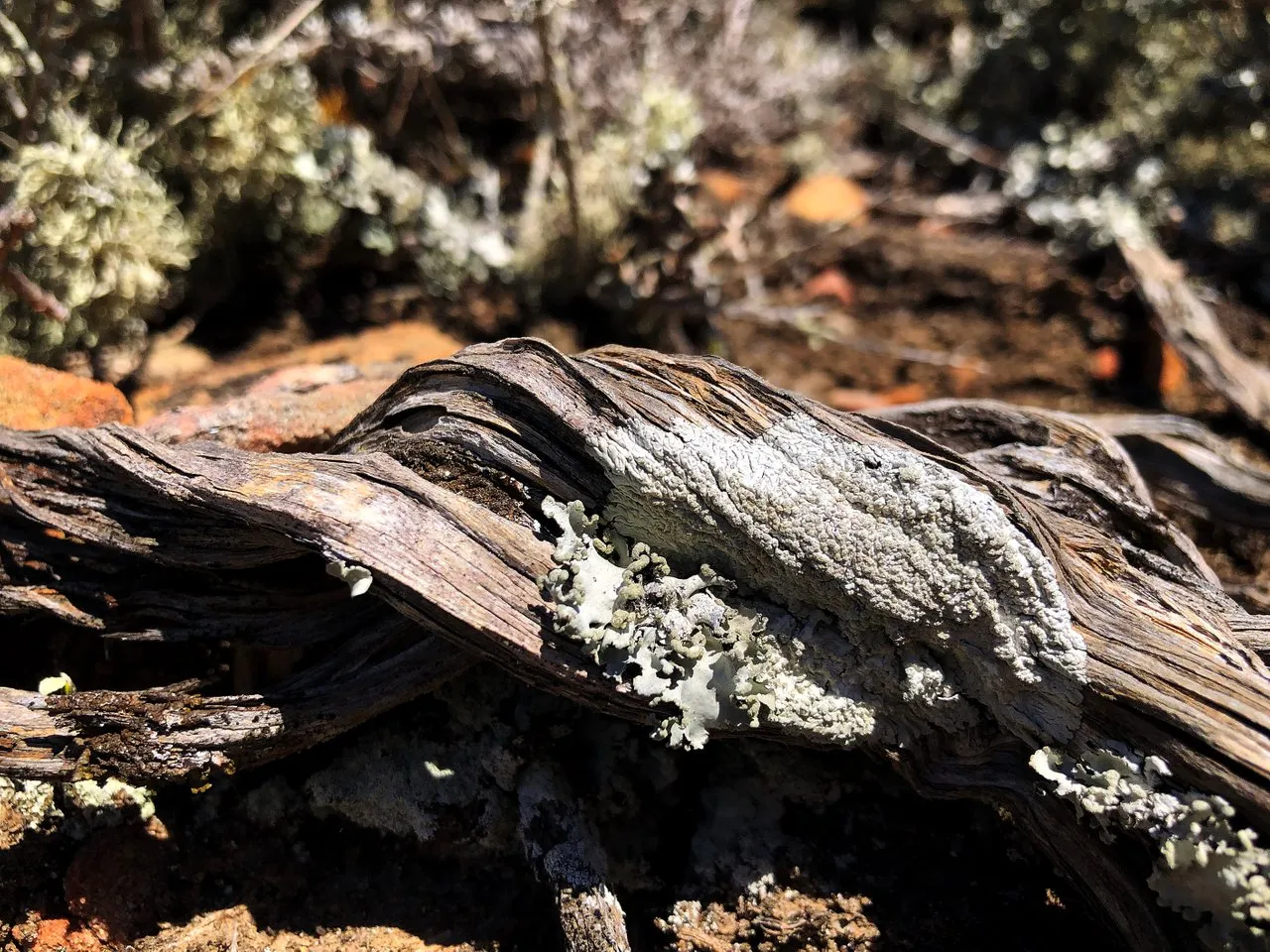

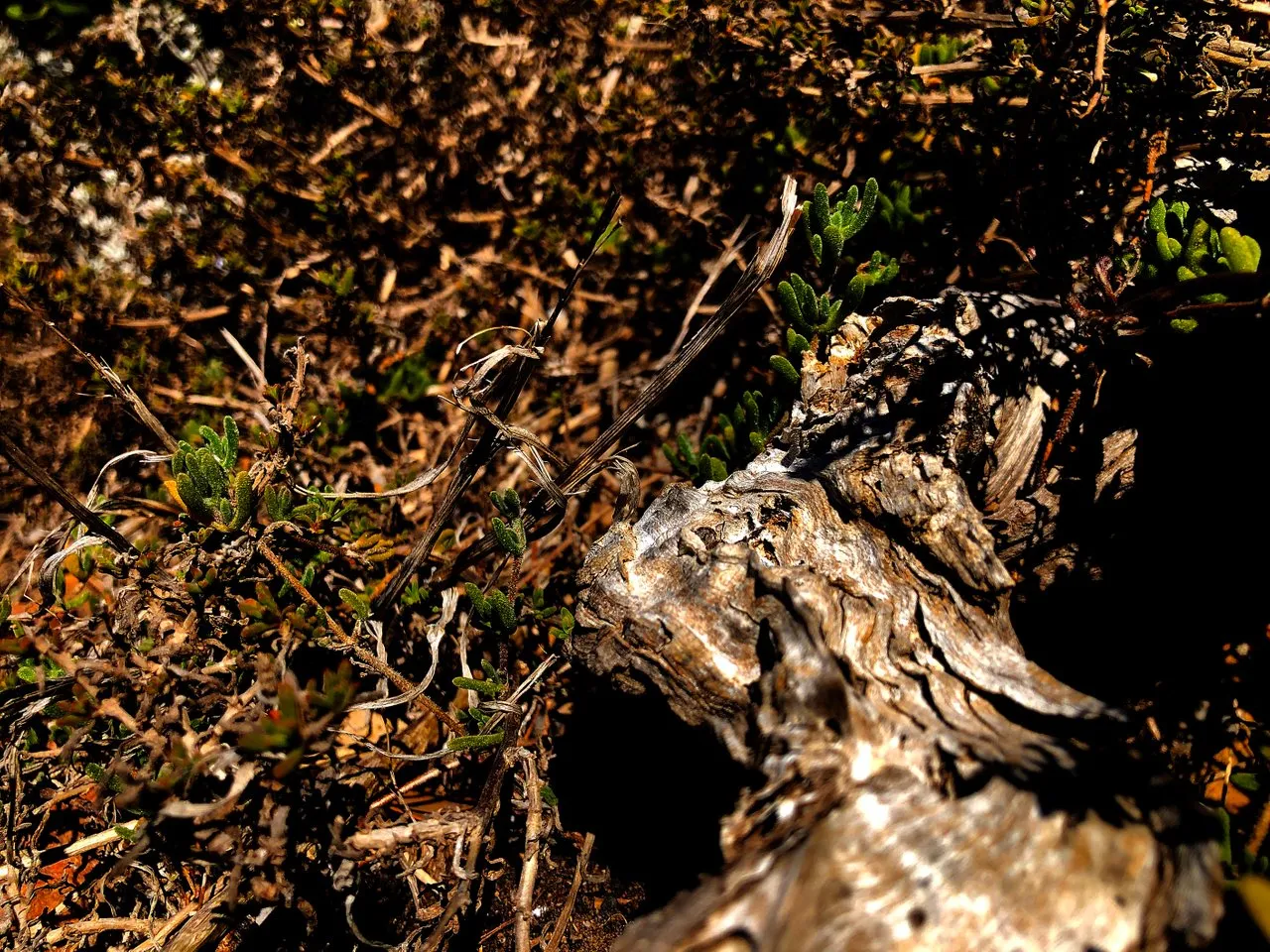
Postscriptum, or the Messy Knot of Movement
Time moves at a pace we are not aware of unless we reflect on the past.

However, this is beautiful and artistic, in the sense that we are never really aware of time moving unless we become aware of it. It is like art itself: only in the gallery does it somewhat become art. Time only appears to exist in our reflective state upon it.
All of the photographs are my own, taken with the iPhone as mentioned. All the musings are of my own. Inspired by nature and the weird aspect of reflective-time, I write what these images inspire.
Below are two images of what the wood looks like when I do not bend down too far and when I am not in the "artistic" mode.

